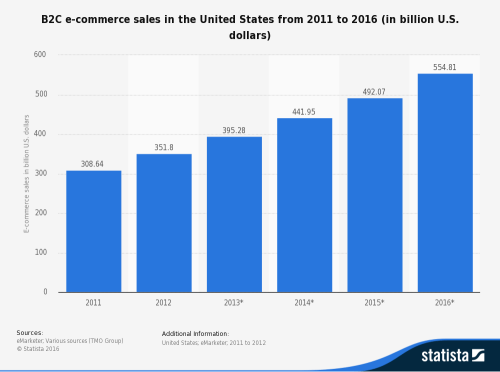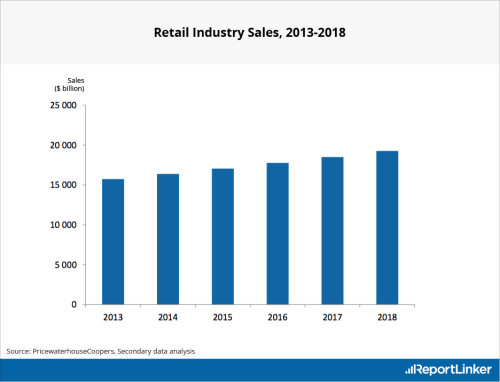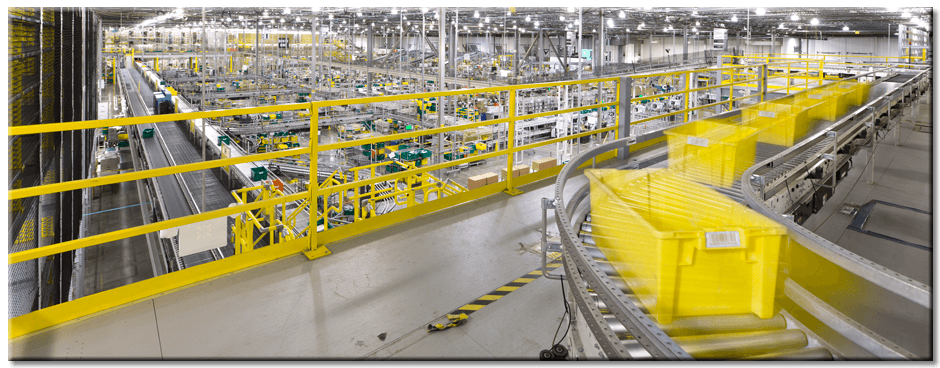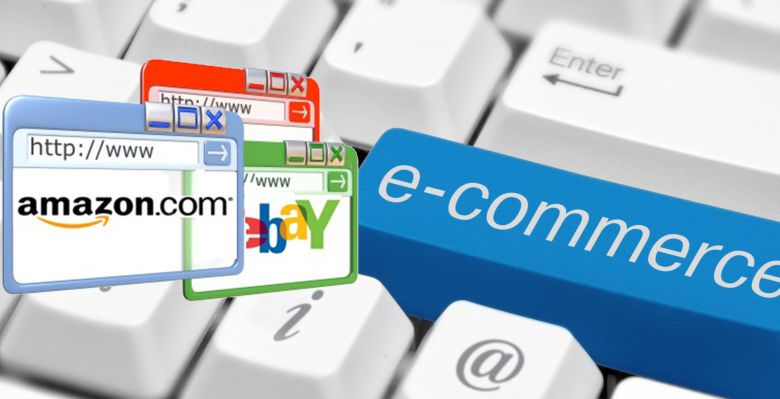Over the last decade eCommerce has gone from a curiosity that, at points, seemed to be unsustainable, to a monolith that is growing at a faster rate than in-store retail. In fact, according to Forrester eCommerce sales are projected to reach $550 Billion by the end of this year – a nearly 80% increase from 5 years ago.

Meanwhile, overall retail industry sales have been relatively flat, and they look like they will continue to be.

eCommerce Logistics: It’s all about space
According to the Prologis report on eCommerce and Logistics Real Estate, there are several reasons for this:
- Need to stock a wider variety of SKUs
- Need to have more buffer stock on hand
- Need more space for processing returned items
- Need for more space due to individual order picking, packing, and shipping directly to consumers
As eCommerce fulfillment continues to grow, retailers need to expand their distribution networks, build more fulfillment centers, and leverage more 3PL logistics partners.
Once online retailers begin to reach scale, there is a greater focus on keeping their fulfillment centers close to major population centers, which enables faster delivery – players like Amazon are already doing this.

Classic Models Are No Longer Relevant
The classic model for distribution networks is no longer relevant, as it was formulated based on the needs and wants of the “traditional” consumer, not the modern one. The traditional consumer did their shopping at a brick and mortar location and didn’t expect or mind waiting 3-5 days for delivery. But new processes are emerging as a result of the modern consumer and their desires.
The modern consumer, who shops more online and has expectations about delivery time and experience that are far beyond previous generations’ – same-day delivery and visibility over the entire delivery process in particular.
Relationships Between Retailers and Service Providers Are Changing
In years past, the power balance between business and consumer was heavily in the former’s favor. However, with the digital revolution and the rise of eCommerce, the balance has shifted. Consumers today have the power to affect the way retailers and service providers collaborate to meet their needs and wants.
Same-day delivery might have seemed inconceivable a decade ago, but now that ecommerce has changed consumer expectations, retailers and service providers have had to work together to streamline, innovate, and optimize their delivery logistics in order to meet those expectations.
Traditional Roles of Distribution Centers, Stores, and Transportation Providers Have Changed
As a result of all of these changes the roles of distribution centers, stores, and transportation providers have also changed considerably. Retail stores have become fulfillment centers, in which online orders are picked, packed, and shipped to consumers – sometimes within the same day (ala “same-day delivery”).
Frequently Asked Questions:
Ecommerce logistics begins with the transport of inventory from the manufacturing unit to the customer. Sometimes called digital fulfillment, it is an important part of logistics and includes:
– Managing inventory
– Storing and warehousing
– Fulfilling orders
Each of these areas has complex subcomponents. For example, within warehousing, the ecommerce retailer must have adequate stock supply. A misstep in any aspect will have a negative result on the consumer experience.
Anything sold or purchased online is a part of eCommerce. Logistics is a behind-the-scenes aspect of eCommerce, but an important one nonetheless. It aggregates several processes such as warehousing, labeling, shipping, packaging, billing, exchange and return, and payment collection. Logistics also involves having a thorough knowledge of regulations, roads, territories, transport laws, etc. The main goal of logistics in eCommerce is to deliver items safely, quickly, and on time.
As eCommerce continues to grow, the role of logistics will become even more significant. Rising online order levels complicates the logistics process and necessitates an increase in resources for managing online order fulfillment. Many e-commerce retailers will team up with 3PL logistics companies to supply distribution and fulfillment channels as required. This gives e-commerce companies a competitive advantage because customers value time more than reliability.
Inbound, outbound, and reverse are the three types of logistics. Supply chain management begins with inbound logistics. It involves the moving, storing, and transporting information and products from the suppliers, via the warehouse, and production facilities to processing or production.
In outbound logistics, finished items are sent from the production facility to the end user. It’s also called order fulfillment.
Lastly, in reverse logistics, items are rerouted back from the end user via the supply chain to the concerned party.



